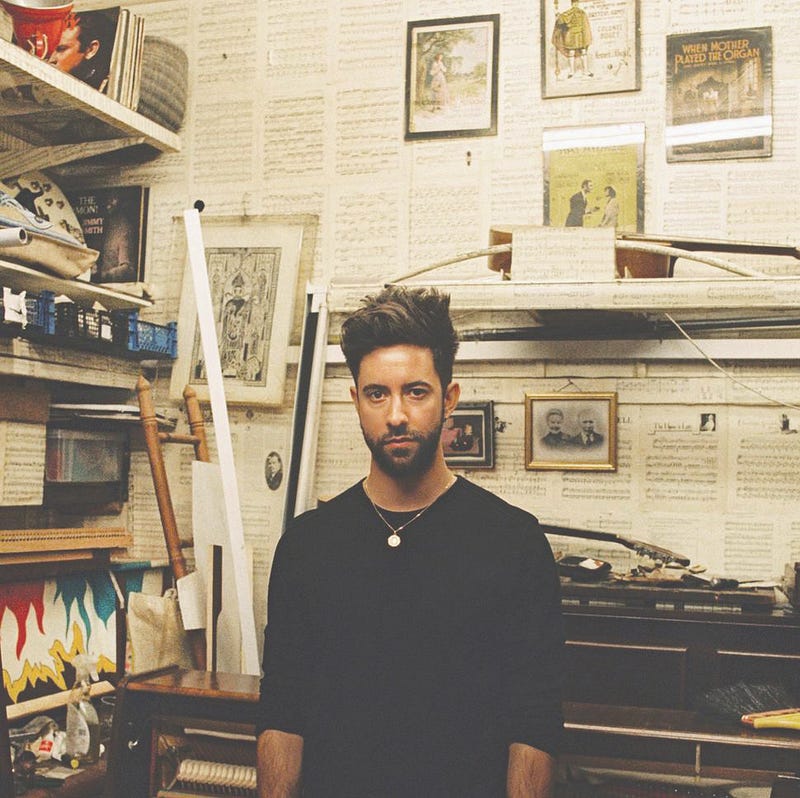
Hamilton’s Campus Activities Board (CAB) held their last Acoustic Coffeehouse of the year in the Events Barn this past Saturday, Apr. 27. Complemented by free Opus coffee and cookies to snack on, the event featured rising singer-songwriter Bruno Major with the Boston-based group Handsome Ghost opening.
Handsome Ghost, the bedroom-pop duo led by Tim Noyes, performed several songs from their newly-released debut record, “Welcome Back.” Since the start of their group in 2014, Handsome Ghost has gained early recognition for their single, “Blood Stutter,” with their EP,
Steps
, following a year later.
The Brilliant Glow
, the group’s second EP was released in 2016, just before their cross-country tour later that year. Their set on Saturday consisted of “Reckless Lover,” “Fool,” and “See You When I See You,” among others.
Performing at Hamilton the day before the official start of his North American Spring Tour, Bruno Major joked as he took the stage that his Acoustic Coffeehouse performance would actually mark the unofficial start to the tour. Major, currently based out of London, gained recognition back in 2016 when he began work on what would eventually become his first full-length release,
A Song for Every Moon
. The 12-song album is made up of 12 different singles that he released once-a-month for a year preceding the album release in Aug. 2017.
On Saturday, Major looked right at home in the cozy, subdued environment of the Acoustic Coffeehouse. The stage itself was pretty empty, featuring just a single microphone and a few of Major’s guitars — a fitting background for his own performance, as his music itself is a bare hybrid of traditional singer-songwriter elements and pared-down electronic production. Take, for example, his cover of the well-known Chet Baker rendition of “Someone in Love,” a rendition from
A Song for Every Moon
, which Major also performed on Saturday. The original song, performed by Baker, is already sonically sparse, as Baker’s voice is accompanied by only piano, a soft drum brush, and bass.
Bruno Major’s cover does not try hard to change this recipe. Instead, the piano and brush are replaced with equally-subdued but still-jazzy guitar licks and a minimalistic drum backing that altogether seem to accentuate the song’s sense of space even more than the original. Major’s voice is able to breathe and create a unique atmosphere within the song. The rest of Major’s discography follows this pattern almost to a tee. It’s a sound that works and one he has perfected.
The barren musical soundscape in which Bruno Major finds himself is not new, but is in fact a style that has made previous appearances over the years and across genres. Whether it’s Chet Baker’s 1956 jazzy “Someone in Love,” D’Angelo’s 2000 soulful “Untitled (How Does It Feel),” or Bruno Major’s most recent single, “Old-Fashioned” (released in Feb. of this year), the common thread that ties these songs together is the emptiness of the production or backing instrumentals. In all cases, the result is the feeling of being left hanging on every sound, every lyric — an entrancing and hypnotizing experience no matter the song or genre.
On Saturday, between two songs, Bruno Major took the time to explain how his next song, while once written as a romantic ballad, had personally changed meaning for him recently, an idea that struck me. To think of a song as fluid and dynamic over time is not something that had really crossed my mind until then, but when Major told us how this song’s meaning had evolved, it made perfect sense: for Major, his music is an extension of who he is, an extension that doesn’t simply stay indefinitely static. Instead, he uses the sparse scaffolding of his music as a way to leave room for growth over time, whether that be the growth of the song, or the growth of the listener.
In any case, I left Saturday’s concert with more than just free coffee. I see now that it is the space between the noise that provides the opportunity to reflect, re-interpret, and grow. Perhaps it is just a little ironic that a concert is where I learned this — that it is during the silence when we should listen closest.

















